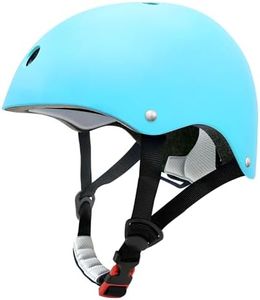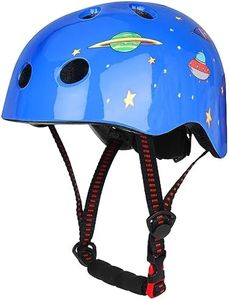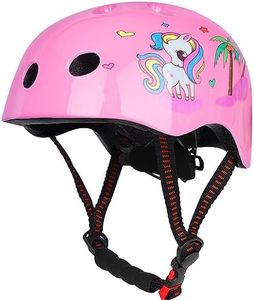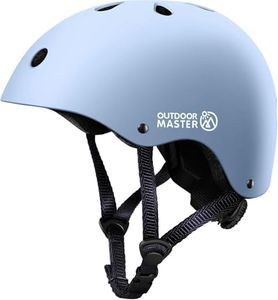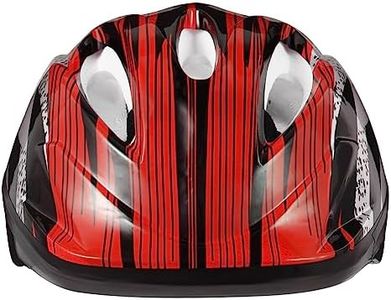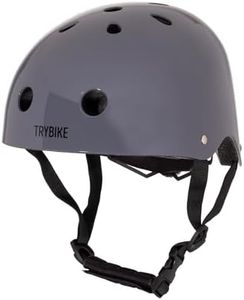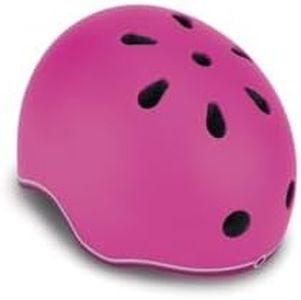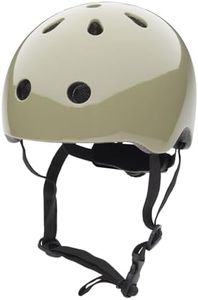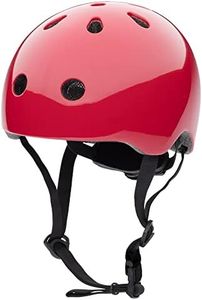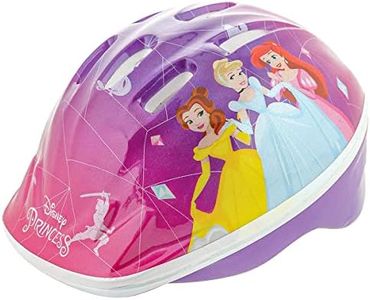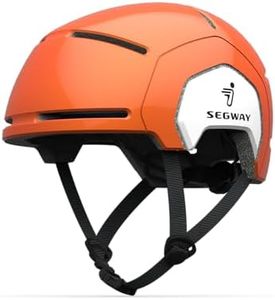We Use CookiesWe use cookies to enhance the security, performance,
functionality and for analytical and promotional activities. By continuing to browse this site you
are agreeing to our privacy policy
10 Best Toddler Bike Helmets
From leading brands and best sellers available on the web.Buying Guide for the Best Toddler Bike Helmets
Choosing a toddler bike helmet is an important step in ensuring your child's safety while they're learning to ride. The right helmet will not only protect their head in the event of a fall but also encourage them to wear it consistently because it fits well and feels comfortable. When picking a helmet, knowing the key features and how they relate to your child's needs will help you make a confident and informed choice.Size and FitSize and fit are all about how snugly the helmet sits on your child's head. A helmet that's too loose can slip out of place, while one that's too tight can be uncomfortable and discourage use. Toddler helmets usually come in different size ranges based on head circumference, so it's important to measure your child's head just above the eyebrows with a measuring tape. Look for helmets with adjustable straps and inner padding that can help fine-tune the fit as your child grows. The goal is a helmet that doesn't move around but also isn't pinching anywhere—a good fit is crucial for both safety and willingness to wear.
Safety CertificationsSafety certifications are labels that show a helmet has passed tests to protect your child's head. In many regions, helmets have specific safety standards, like CPSC in the US or CE in Europe. These standards ensure the helmet can absorb impact energy and provide real protection. Always check for a visible certification label inside or on the helmet, as uncertified helmets may not offer reliable safety. Choosing a certified helmet gives peace of mind that you're meeting recommended safety guidelines for young riders.
VentilationVentilation refers to the number and placement of holes or vents in the helmet which keep the wearer's head cool. This is important for toddlers who can overheat easily or get sweaty while playing. Helmets with more or larger vents are generally cooler, while those with fewer vents might be warmer but potentially offer greater coverage. If your child will ride mostly in warm weather or is prone to sweating, choose a helmet with good airflow. However, in colder climates or for shorter rides, ventilation might be less of a priority.
WeightWeight is how heavy the helmet feels on your child's head. Toddler helmets are designed to be lightweight, but there can still be differences. A lighter helmet is easier for a small child to wear for extended periods and won't strain their neck. However, very light helmets should still be sturdy and safe. If your child is sensitive to wearing things on their head or often complains, looking for a more lightweight option may keep them happier and more likely to wear the helmet.
Retention and Chin StrapsThe retention system and chin straps keep the helmet securely in place. Some helmets have buckle systems, while others use dial or Velcro adjustments. The key is to ensure the straps are easy for adults to adjust but not for toddlers to loosen themselves. Straps should be comfortable beneath the chin without pinching, and the helmet should not shift when the child shakes their head. The right retention system will make putting on and removing the helmet hassle-free for parents while providing security during play.
Comfort PaddingComfort padding includes the soft foam inside the helmet that rests against your child's head. This padding absorbs sweat, adds comfort, and helps the helmet fit more snugly. Some helmets have removable, washable pads which can be a big help for keeping things clean, especially with active toddlers. If your child has sensitive skin or particular comfort needs, look for helmets with plush, moisture-wicking padding that can be adjusted or replaced when needed.
Style and VisibilityStyle and visibility cover both how the helmet looks and how easy it is for others to see your child. Bright colors, fun patterns, and themed designs can make your child more excited to wear their helmet, while high-visibility features like reflective strips or stickers help others spot your child easily, especially in low light. While style is mostly about personal preference, visibility can add an extra layer of safety, so consider bright and reflective designs if your child rides in mixed lighting conditions.
